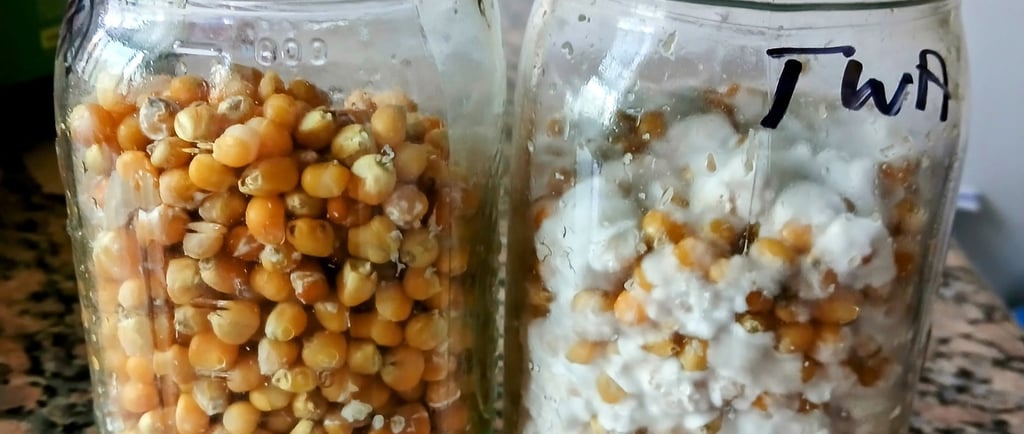Colonized Grain Too Dense to Shake? Simple Fixes for Rock-Hard Jars
Learn why fully colonized grain jars become dense and hard to shake, what causes “brick” mycelium, and simple ways to break them up without contaminating your grow. Includes beginner tips, personal experience, and prevention methods.
GROWING
11/13/20252 min read


Why Your Grain Jar Turns Into a Brick (And How to Break It Up)
When I first started growing mushrooms, one of the things that surprised me the most was how solid a colonized grain jar can get.
Some strains stay fluffy and easy to shake…
Others turn into something that feels like you’re trying to break up a coconut shell.
Over the years I’ve broken up hundreds of jars, and I started to notice something funny:
I could literally tell how much I’d been growing by how sore or red the side of my hand was.
Here’s why grain jars get rock-hard, and what to do about it.
Why Grain Jars Become Hard to Shake
A few common reasons:
1. Some strains just “lock up” more
Lion’s Mane, Chestnut, and certain Oyster genetics can colonize so aggressively that the grains bind together like glue.
2. You didn’t shake the jar at 20–30%
If you let the jar colonize all the way through without a mid-shake, the mycelium forms a solid block.
3. The jar was packed too full or too tight
Less room = less ability to move the grains around.
4. The grains were slightly too wet
Wet grains tend to stick and clump → more brick, less fluff.
How I Break Up Really Dense Grain Jars
I’ve used the same method for years — and it works even on the stubborn jars.
1. Hand “karate chop” method (my go-to)
I hold the jar sideways and strike the side of the jar with the side of my hand (like a soft karate chop).
It sounds crazy, but experienced growers know exactly what I mean, it actually works amazingly well.
And yeah… sometimes I can literally gauge how much I’m growing by how beat-up my hand feels the next day.
2. Twist and hit the bottom
Rotate the jar a quarter turn → hit the bottom edge of the jar into your palm or a padded surface.
Not the glass itself, the rim where the glass is thick.
3. Spoon method (when jars are impossible to shake)
Some jars are so dense you basically have to dig into them.
In that case:
Sterilize a spoon
Open the jar
Scoop and break it apart manually
Use immediately for grain-to-grain or spawn to substrate
If you do this, just work clean and don’t plan on reusing the same jar, just treat it like “single-use spawn.”
Should You Worry If Your Jar Becomes a Brick?
No, in most cases, it’s actually a sign of strong, healthy colonization.
But if you see:
wet spots
yellow slime
sour smell
dense areas but no white mycelium
green / blue / black patches
Then it’s contamination, not density.
A rock-hard white jar = normal.
A rock-hard sticky, wet jar = bad.
How to Prevent This in the Future
Shake at 20–30% colonization
Don’t overload jars
Avoid overly wet grain
Don’t let jars sit for weeks after fully colonized
Consider switching grain types (milo or oats stay fluffier)
Final Thoughts
Breaking up grain jars is just one of those things you get used to as a grower.
Some jars shake apart in two seconds…
Others turn into gym workouts.
But once you know why it happens, and how to deal with it, it becomes just another easy part of the grow cycle.
Cultivation
Helping you master gourmet mushroom cultivation — on or off the grid.
© 2024. All rights reserved.
